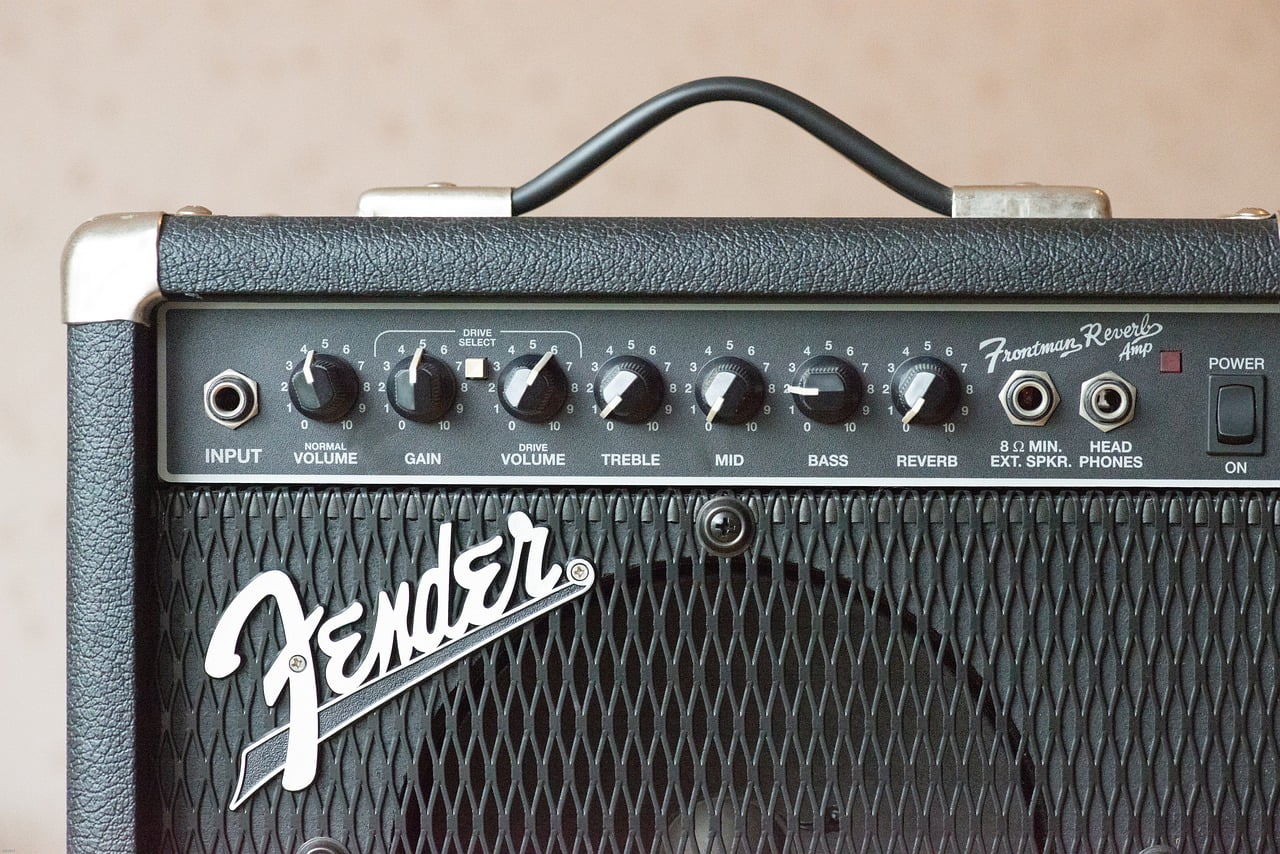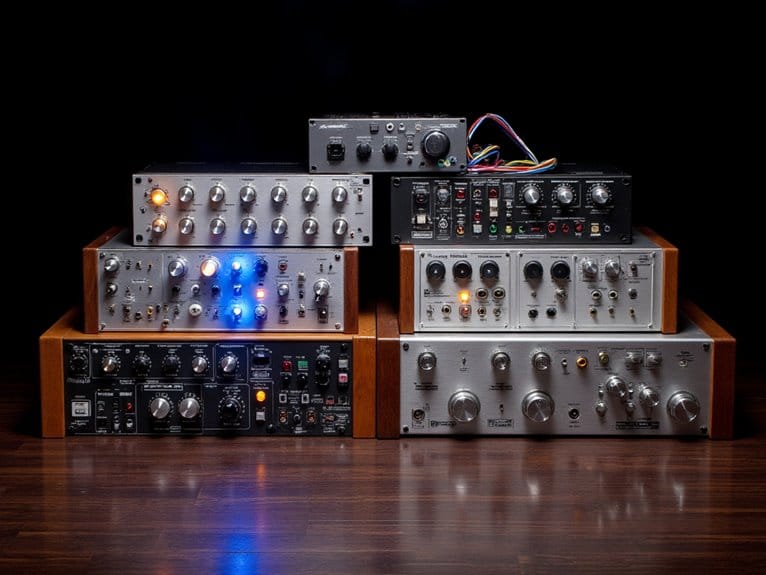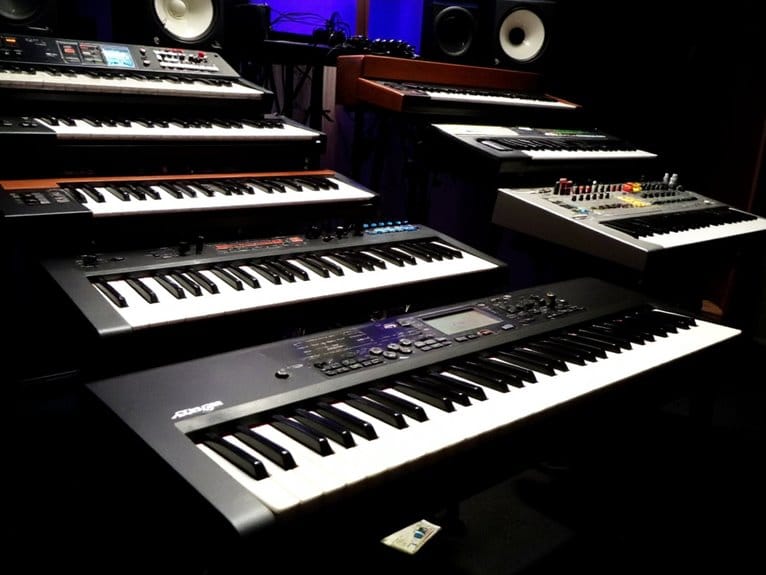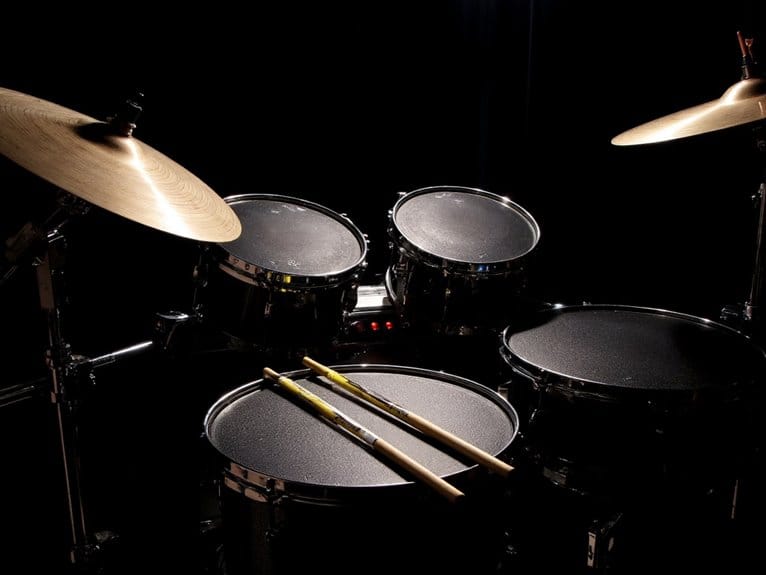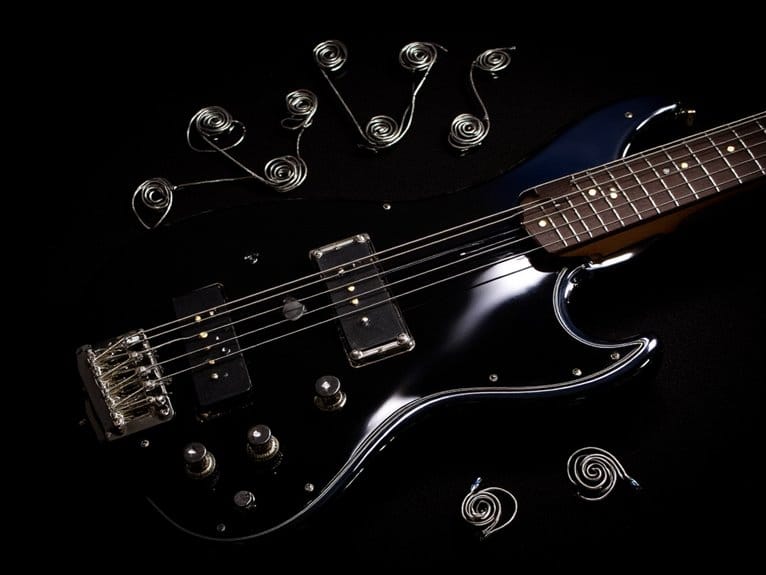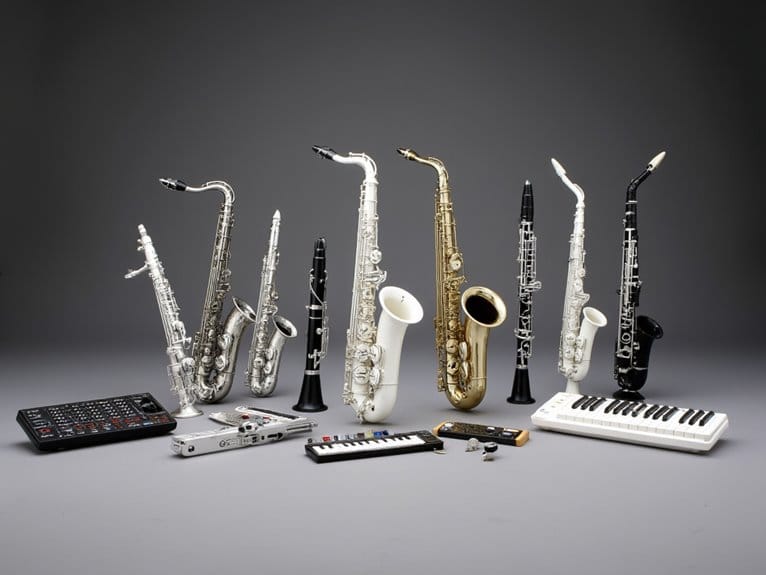Studio-Ready Bass Amps: Choosing the Right Amplification for Low Frequencies
When aiming for studio-ready bass amps to enhance low frequencies, ensuring the amplifier has a high power output (500-1000 watts) is essential for maintaining clarity in low-frequency sounds. Tube amps offer natural warmth and overdrive, perfect for cleaner tones, while solid-state amps provide reliability and affordability. Understanding the differences between tube and solid-state amplifiers, as well as choosing between combo and stack configurations, can greatly impact the desired sound outcome. The right combination of power output, amp type, and signal processing equipment is key. By focusing on these aspects, you’ll be on your way to selecting the ideal amplification for your low-frequency needs.
We are supported by our audience. When you purchase through links on our site, we may earn an affiliate commission, at no extra cost for you. Learn more.
Power Output Considerations
When selecting a studio-ready bass amp, power output considerations play a crucial role in ensuring optimal sound production and performance. Bass amps designed for studio use typically require high power outputs ranging from 500-1000 watts to effectively handle the low frequencies inherent in bass guitars. This higher power capacity is essential to maintain clean tones and have precise control over sound reproduction in the studio environment.
In the domain of bass amplification, tube amps and solid-state amps are two prevalent options. Tube amps are known for offering warmer tones and natural overdrive characteristics, favored by many professional bassists for their rich sound. On the other hand, solid-state amps are more affordable, reliable, and require less maintenance, making them suitable for those on a budget or beginners entering the studio scene.
Power output is a critical factor for bass amps in studio settings as it enables the bass guitar to compete effectively with other instruments in the mix. Combo amps, which integrate the amplifier and speakers in a single unit, are often preferred by beginners for their simplicity and ease of use. In contrast, stack configurations, comprising separate amplifier and speaker cabinets, provide greater flexibility and power options for professional bassists looking to fine-tune their sound in the studio.
Tube Vs. Solid-State Amplifiers
Comparing tube amplifiers and solid-state amplifiers reveals distinct characteristics that influence tone, cost, and maintenance considerations in studio environments. Tube amplifiers, known for their warmer tones and natural overdrive, utilize glass vacuum tubes to produce a vintage sound that many musicians desire. However, these qualities come at a price – tube amps are heavier, more expensive, and require more maintenance than their solid-state counterparts. On the other hand, solid-state amplifiers are affordable, low maintenance, and reliable, making them a practical choice for studio settings where budget considerations and ease of use are important factors.
When deciding between tube and solid-state amps, it ultimately boils down to the desired tone, maintenance preferences, and budget constraints. Tube amps excel at delivering rich, warm tones with natural saturation, ideal for musicians seeking that classic sound. Conversely, solid-state amps may lack the inherent overdrive characteristics of tube amps but offer a more cost-effective and hassle-free solution for those prioritizing reliability and ease of operation in the studio. Understanding these differences is essential in selecting the right amplifier to achieve the desired sound while considering practicality and budget constraints.
Combo Vs. Stack Configuration
One essential distinction in bass amplification setups lies in the choice between combo and stack configurations. Bass combo amps integrate the amplifier and speaker into a single unit, making them convenient and portable. These are often favored by beginner bass players and are suitable for small venues due to their compact size and straightforward setup. On the other hand, stack bass amp configurations offer a more professional level of customization. They consist of separate amp heads and speaker cabinets, providing experienced players with the flexibility to mix and match components to achieve their desired sound.
While bass combo amps are ideal for those prioritizing portability and ease of use, stack configurations cater to musicians seeking more power and tonal options. Professionals often prefer stack setups as they allow for easy upgrades and changes to tailor the sound to specific performance needs. With the ability to mix different amp heads and speaker cabinets, stacks offer a level of versatility that combo amps may lack. This versatility is particularly advantageous in studio settings where precise tonal control is essential for achieving the desired sound. Ultimately, the choice between a bass combo amp and a stack configuration depends on the player’s preferences, performance requirements, and level of expertise.
Achieving Clean Tones
To achieve clean tones in bass amplification, a high power output ranging from 500 to 1000 watts is essential for maintaining clarity and definition in low-frequency sounds. The power of the amplifier plays a significant role in making sure that the bass frequencies are reproduced accurately and with precision. When looking at different types of amps, tube amps are known for offering natural warmth and overdrive, which can contribute to a cleaner tone. On the other hand, solid-state amps provide reliability and affordability, making them a practical choice for achieving clean tones in bass amplification.
In addition to the type of amp used, proper signal processing is vital for obtaining clean tones. High-quality preamps and EQ settings can help shape the sound to ensure that the low frequencies are clear and well-defined. By carefully adjusting the EQ settings, bass players can tailor their tone to cut through the mix and deliver a precise, articulate sound. Achieving clean tones not only enhances the overall sound quality but also allows the bass to be heard distinctly in various musical contexts. Investing in the right combination of high power output, suitable amp type, and effective signal processing is key to achieving clean tones in bass amplification.
Competing in a Studio Setting
When competing in a studio setting, the selection of a bass amp becomes vital for achieving a powerful and well-defined sound that can cut through the mix effectively. In this environment, where clarity and precision are critical, having the right tools is paramount. Here are four key considerations for choosing the best bass amp to compete in a studio setting: A bass amp should provide a solid foundation of low-end frequencies while maintaining clarity in the higher range, ensuring that each note is articulated. Additionally, incorporating features like a passive sub can enhance the overall sound, allowing for deep, resonant tones that enrich the musical landscape. Ultimately, the right bass amp will not only complement the instrument but also elevate the performance to new heights.
- High Power: In the studio, bass amps need to deliver high power, typically between 500-1000 watts, to handle the low frequencies and compete with other instruments vying for sonic space.
- Tube Amps vs. Solid-State Amps: Tube amps are favored for their warmer tones and natural overdrive, making them ideal for studio recordings. On the other hand, solid-state amps offer a more affordable option with lower maintenance requirements.
- Bass Combo Amps: Beginners in the studio may find bass combo amps advantageous, as they combine the amplifier and speaker in a single cabinet, providing convenience without sacrificing sound quality.
- Bass Amp Stacks: For professionals seeking versatility in a studio setting, bass amp stacks offer the flexibility to switch speaker cabinets or amp heads, allowing for a range of tones to be explored and perfected.
To compete effectively in a studio setting, it is crucial to choose a bass amp that not only meets the high-power demands of low frequencies but also offers studio-ready features like DI outputs and effects loops for producing excellent bass tracks. Additionally, investing in quality studio bass gear can significantly enhance your sound, providing versatility and clarity that translate well in recorded formats. Look for amps with adjustable EQ settings to tailor your tone to fit the mix seamlessly. When paired with the right cabs and effects, your setup can produce powerful, professional-grade bass tracks that stand out in any production.

